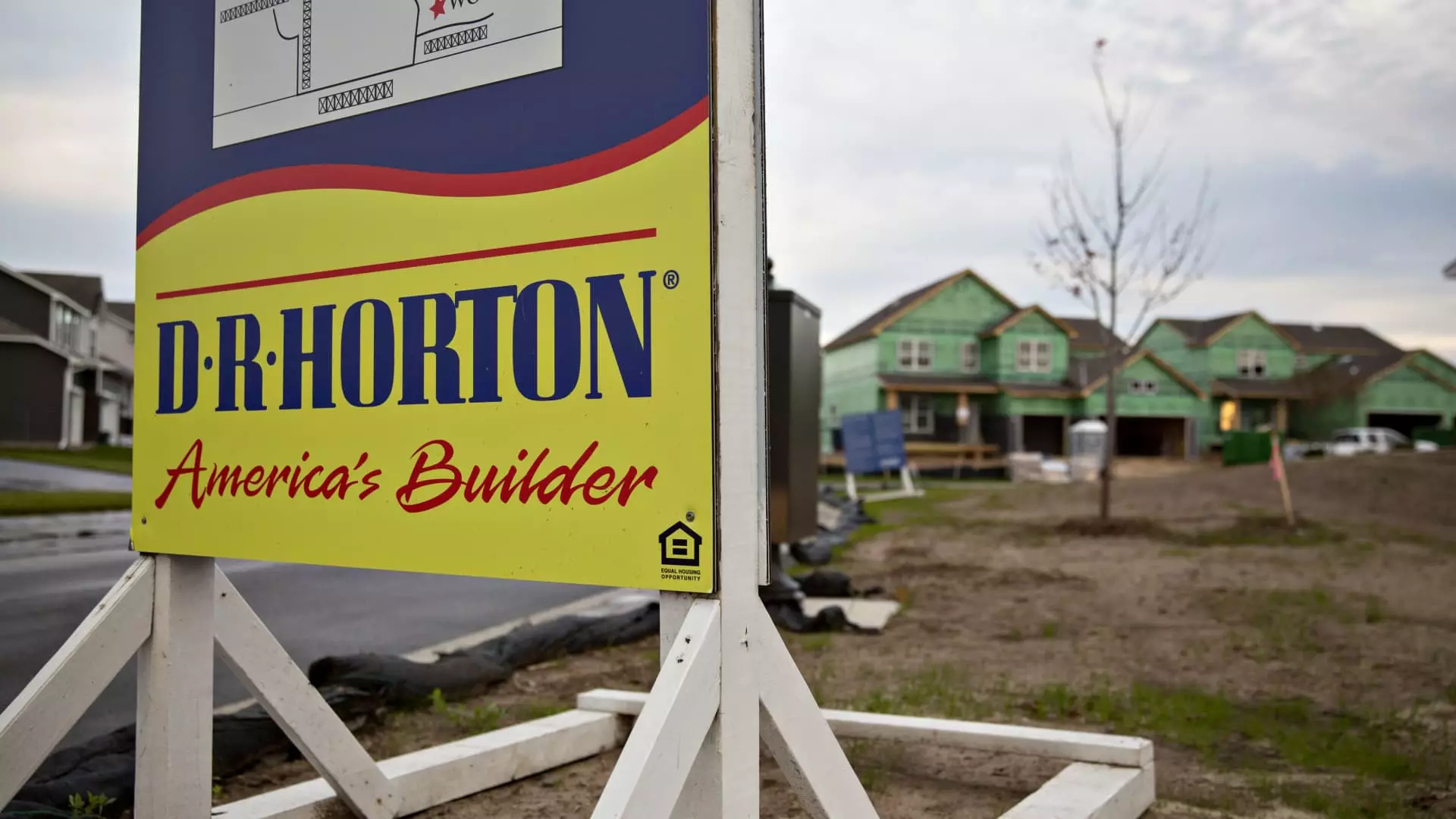As economic indicators continue to fluctuate, the pressure on consumers and the housing market has reached a pivotal moment, particularly amid recent reports from D.R. Horton, a leading homebuilder based in Arlington, Texas. The company’s latest quarterly earnings fell short of analysts’ expectations, casting a shadow over not only their operations but the broader homebuilding sector. The knock-on effect has been pronounced, as D.R. Horton’s shares plummeted by 11%, reflecting growing concerns among investors regarding interest rates and consumer behavior.
D.R. Horton’s CEO, David Auld, emphasized that the volatility in interest rates is ushering many prospective homebuyers to adopt a wait-and-see approach. Despite a slight reduction in mortgage rates from previously high levels earlier this year, many potential buyers are holding off on purchases, anticipating even more favorable rates in 2025. Currently, the rate for a 30-year fixed mortgage sits at 7%, a decrease from the peak of 8% last October. This current rate remains one of the highest since July, reinforcing fears regarding affordability and access to homeownership for many Americans.
The correlation between mortgage rates and the yield on the 10-year Treasury note is essential in this context. The recent surge in bond yields—an inverse relationship to bond prices—indicates a complex situation. Despite expectations of lowering the fed funds rate earlier this month, the market’s reaction suggests hesitation. Economic data showing resilience paired with skepticism about the Federal Reserve’s future rate cuts has compounded the uncertainty gripping the housing market.
Amid these challenging conditions, D.R. Horton has set its revenue expectations for the fiscal year ending September 2025 between $36 billion and $37.5 billion. This outlook significantly trails behind the FactSet consensus estimate of $38.91 billion derived from market analysts, highlighting a detrimental trend in confidence. The company’s reported earnings of $3.92 per share and revenue of $10 billion for the most recent quarter further confirmed analysts’ more optimistic forecasts of $4.17 per share and $10.22 billion in revenue, respectively.
The ripple effects of D.R. Horton’s underperformance extended beyond its doors, negatively impacting the shares of other prominent homebuilders such as Toll Brothers, Pulte Group, and KB Home, all of which saw declines nearing 4%. The S&P Homebuilders ETF (XHB), a barometer tracking the housing sector within the S&P 500, also experienced a decrease of 3%, underscoring a troubling trend for the industry.
The implications of these developments raise questions regarding consumer sentiment and the future of homebuilding in the midst of prolonged economic uncertainty. Major home improvement retailers like Home Depot and Lowe’s felt the heat too, with their shares falling approximately 2%. It is clear that when market stability is in flux, it creates a challenging environment not just for builders but consumers looking to invest in their future.
As the landscape continues to evolve, stakeholders across the housing market must adapt to the pressures of interest rates. There lies a critical need for informed strategies to navigate these economic waters, as both consumers and builders await a clearer signal for the future, hoping for a stabilization that could revitalize the housing market.


Leave a Reply